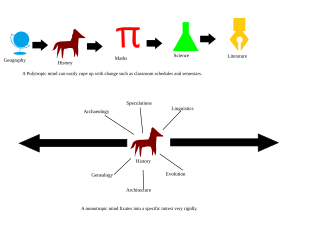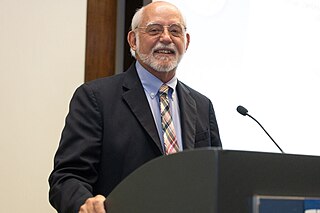
Attention deficit hyperactivity disorder (ADHD) is a neurodevelopmental disorder characterised by executive dysfunction occasioning symptoms of inattention, hyperactivity, impulsivity and emotional dysregulation that are excessive and pervasive, impairing in multiple contexts, and otherwise age-inappropriate.

Atomoxetine, sold under the brand name Strattera, is a selective norepinephrine reuptake inhibitor medication used to treat attention deficit hyperactivity disorder (ADHD) and, to a lesser extent, cognitive disengagement syndrome. It may be used alone or along with psychostimulants. It enhances the executive functions of self-motivation, sustained attention, inhibition, working memory, reaction time and emotional self-regulation. Use of atomoxetine is only recommended for those who are at least six years old. It is taken orally. The effectiveness of atomoxetine is comparable to the commonly prescribed stimulant medication methylphenidate.

Fasoracetam is a research chemical of the racetam family. It is a putative nootropic that failed to show sufficient efficacy in clinical trials for vascular dementia. It is currently being studied for its potential use for attention deficit hyperactivity disorder.

Hyperfocus is an intense form of mental concentration or visualization that focuses consciousness on a subject, topic, or task. In some individuals, various subjects or topics may also include daydreams, concepts, fiction, the imagination, and other objects of the mind. Hyperfocus on a certain subject can cause side-tracking away from assigned or important tasks.
Adult Attention Deficit Hyperactivity Disorder is the persistence of attention deficit hyperactivity disorder (ADHD) into adulthood. It is a neurodevelopmental disorder, meaning impairing symptoms must have been present in childhood, except for when ADHD occurs after traumatic brain injury. Specifically, multiple symptoms must be present before the age of 12, according to DSM-5 diagnostic criteria. The cutoff age of 12 is a change from the previous requirement of symptom onset, which was before the age of 7 in the DSM-IV. This was done to add flexibility in the diagnosis of adults. ADHD was previously thought to be a childhood disorder that improved with age, but recent research has disproved this. Approximately two-thirds of childhood cases of ADHD continue into adulthood, with varying degrees of symptom severity that change over time and continue to affect individuals with symptoms ranging from minor inconveniences to impairments in daily functioning.
The hunter versus farmer hypothesis is a proposed explanation for the nature of attention-deficit hyperactivity disorder (ADHD). It was first suggested by radio host Thom Hartmann in his book Attention Deficit Disorder: A Different Perception.
Cognitive disengagement syndrome (CDS) is an attention syndrome characterised by prominent dreaminess, mental fogginess, hypoactivity, sluggishness, slow reaction time, staring frequently, inconsistent alertness, and a slow working speed. To scientists in the field, it has reached the threshold of evidence and recognition as a distinct syndrome.

Russell Alan BarkleyFAPA is a retired American clinical neuropsychologist who was a clinical professor of psychiatry at the VCU Medical Center until 2022 and president of Division 12 of the American Psychological Association (APA) and of the International Society for Research in Child and Adolescent Psychopathology (ISRCAP). Involved in research since 1973 and a licensed psychologist since 1977, he is an expert on attention-deficit hyperactivity disorder (ADHD) and has devoted much of his scientific career to studying ADHD and related fields like childhood defiance. He proposed the renaming of sluggish cognitive tempo (SCT) to concentration deficit disorder (CDD) and later cognitive disengagement syndrome (CDS).
Attention deficit hyperactivity disorder predominantly inattentive, is one of the three presentations of attention deficit hyperactivity disorder (ADHD). In 1987–1994, there were no subtypes or presentations and thus it was not distinguished from hyperactive ADHD in the Diagnostic and Statistical Manual (DSM-III-R). In DSM-5, subtypes were discarded and reclassified as presentations of the same disorder that change over time.

Despite the scientifically well-established nature of attention deficit hyperactivity disorder (ADHD), its diagnosis, and its treatment, each of these has been controversial since the 1970s. The controversies involve clinicians, teachers, policymakers, parents, and the media. Positions range from the view that ADHD is within the normal range of behavior to the hypothesis that ADHD is a genetic condition. Other areas of controversy include the use of stimulant medications in children, the method of diagnosis, and the possibility of overdiagnosis. In 2009, the National Institute for Health and Care Excellence, while acknowledging the controversy, stated that the current treatments and methods of diagnosis are based on the dominant view of the academic literature.

Edward McKey Hallowell is an American psychiatrist, speaker, New York Times best-selling author and podcast host. He specializes in ADHD and is the founder of the Hallowell ADHD Centers. Hallowell is the author of 20 books, including the Distraction series, co-authored with Dr. John Ratey.
Attention deficit hyperactivity disorder management options are evidence-based practices with established treatment efficacy for ADHD. Approaches that have been evaluated in the management of ADHD symptoms include FDA-approved pharmacologic treatment and other pharmaceutical agents, psychological or behavioral approaches, combined pharmacological and behavioral approaches, cognitive training, neurofeedback, neurostimulation, physical exercise, nutrition and supplements, integrative medicine, parent support, and school interventions. Based on a systematic literature review and meta analysis conducted in 2024, only FDA-approved medications and psychosocial interventions have been shown to improve core ADHD symptoms compared to control groups.
Alternative therapies for developmental and learning disabilities include a range of practices used in the treatment of dyslexia, ADHD, autism spectrum disorders, Down syndrome and other developmental and learning disabilities. Treatments include changes in diet, dietary supplements, biofeedback, chelation therapy, homeopathy, massage and yoga. These therapies generally rely on theories that have little scientific basis, lacking well-controlled, large, randomized trials to demonstrate safety and efficacy; small trials that have reported beneficial effects can be generally explained by the ordinary waxing and waning of the underlying conditions.

Sir Alexander Crichton was a Scottish physician and author.
Hyperkinetic disorder was a psychiatric neuro-developmental condition that was thought to emerge in early childhood. Its features included an enduring pattern of severe, developmentally inappropriate symptoms of inattention, hyperactivity, and impulsivity across different settings that significantly impair academic, social and work performance. It was classified in the World Health Organization's ICD-10 and was roughly similar to the "combined presentation" of attention deficit hyperactivity disorder in the American Psychiatric Association's DSM-5. However, in the ICD-11 the entry for hyperkinetic disorder no longer exists and is replaced by attention deficit hyperactivity disorder.
The Pediatric Attention Disorders Diagnostic Screener (PADDS), created by Dr. Thomas K. Pedigo and Kenneth L. Pedigo, is a suite of computer administered neuropsychological tests of attention and executive functioning. The PADDS is used in the diagnosis of attention deficit hyperactivity disorder (ADHD) in children between the ages of 6 and 12 years. The PADDS software program represents a multi-dimensional, evidence-based approach to ADHD assessment, consisting of the Computer Administered Diagnostic Interview (CADI), the Swanson, Nolan, and Pelham—IV (SNAP-IV) Parent and Teacher rating scales, and the three computer-administered objective measures of the Target Tests of Executive Functioning (TTEF). It calculates a diagnostic likelihood ratio, where each data source is allowed to contribute to (or detract from) the prediction of the diagnosis, as well as normalized relative standard scores, t-scores, z-scores, and percentile ranks for comparison to the non-clinical reference group.
Hyperactivity has long been part of the human condition, although hyperactive behaviour has not always been seen as problematic.
Der Philosophische Arzt is a medical publication published in the late 18th century by Melchior Adam Weikard, a prominent German physician and philosopher to the Russian Empress, Catherine II.
Attention-Deficit/Hyperactivity Disorder (ADHD) is a neurodevelopmental disorder characterized by difficulty focusing attention, hyperactivity, and impulsive behavior. Treatments generally involve behavioral therapy and/or medications. ADHD is estimated to affect about 6 to 7 percent of people aged 18 and under when diagnosed via the DSM-IV criteria. When diagnosed via the ICD-10 criteria, hyperkinetic disorder gives rates between 1 and 2 percent in this age group.
The ADHD Rating Scale (ADHD-RS) is a parent-report or teacher-report inventory created by George J. DuPaul, Thomas J. Power, Arthur D. Anastopoulos, and Robert Reid consisting of 18–90 questions regarding a child's behavior over the past 6 months. The ADHD Rating Scale is used to aid in the diagnosis of attention deficit hyperactivity disorder (ADHD) in children ranging from ages 5–17.








